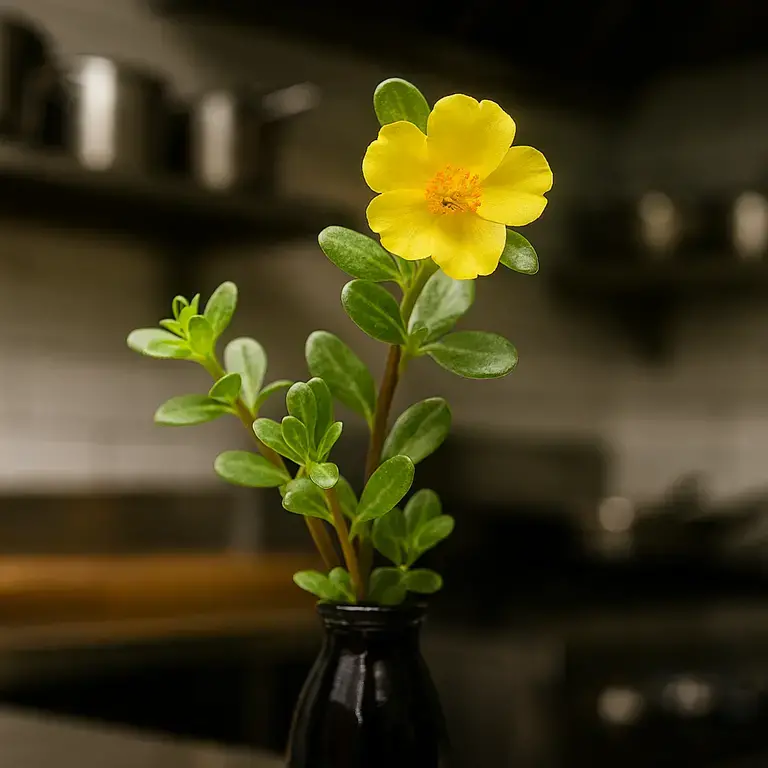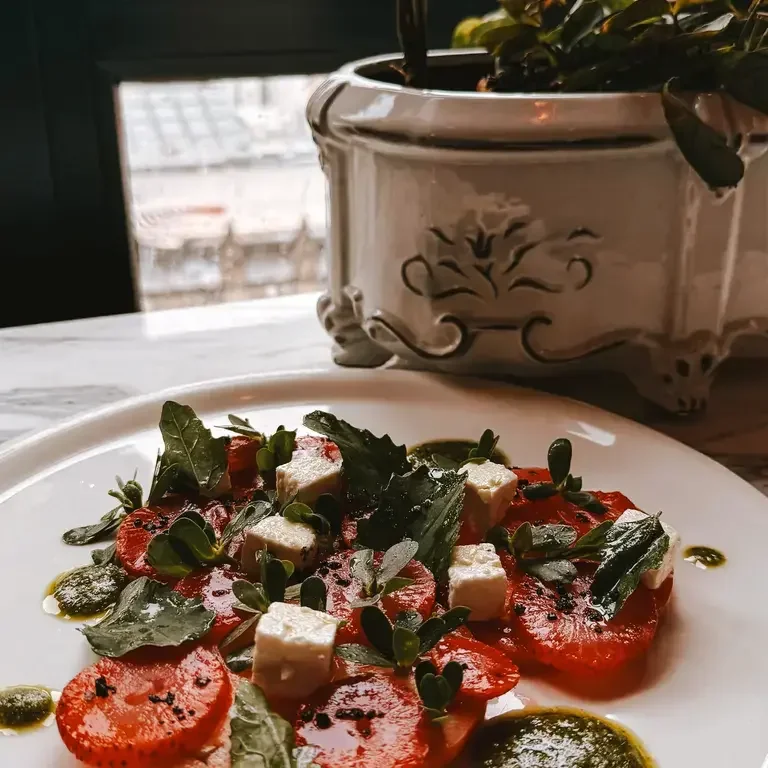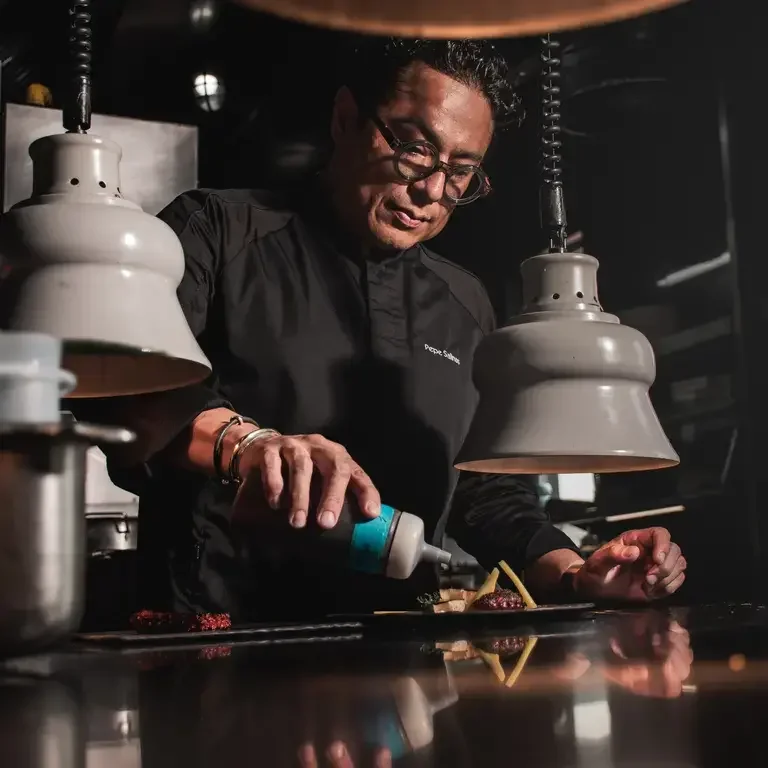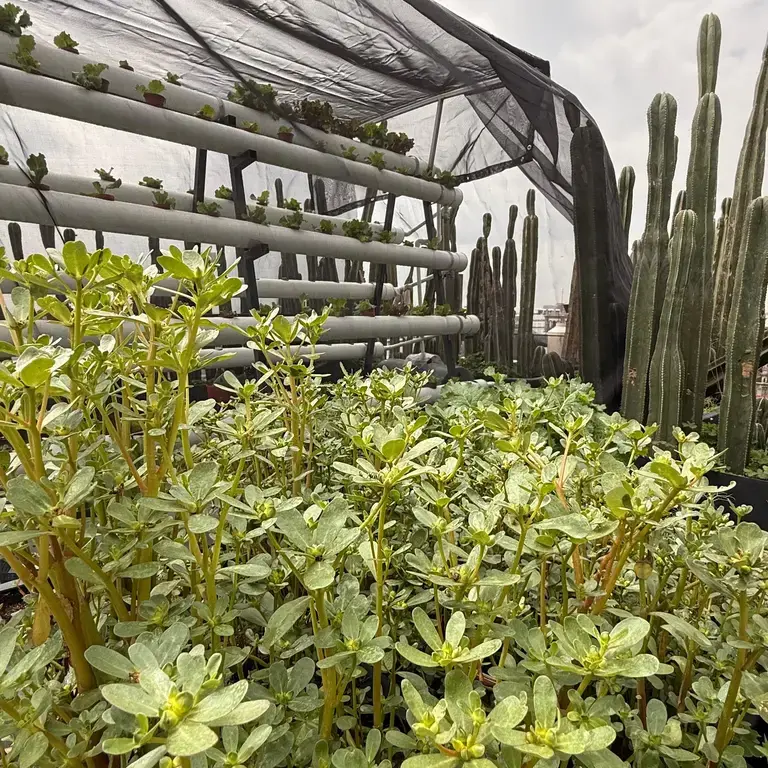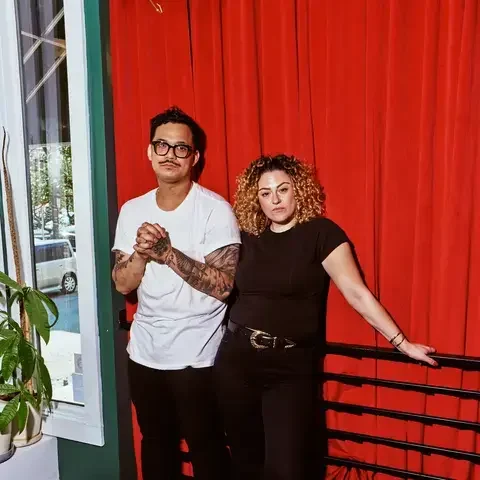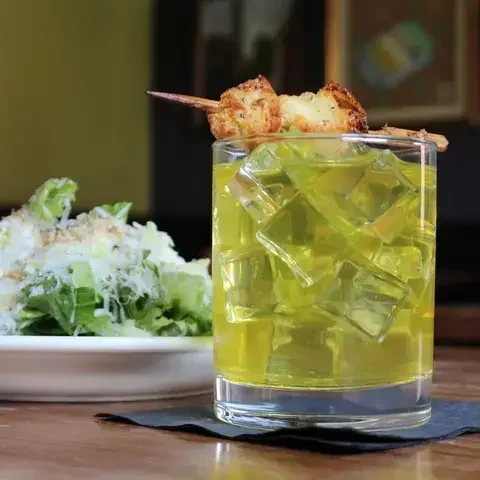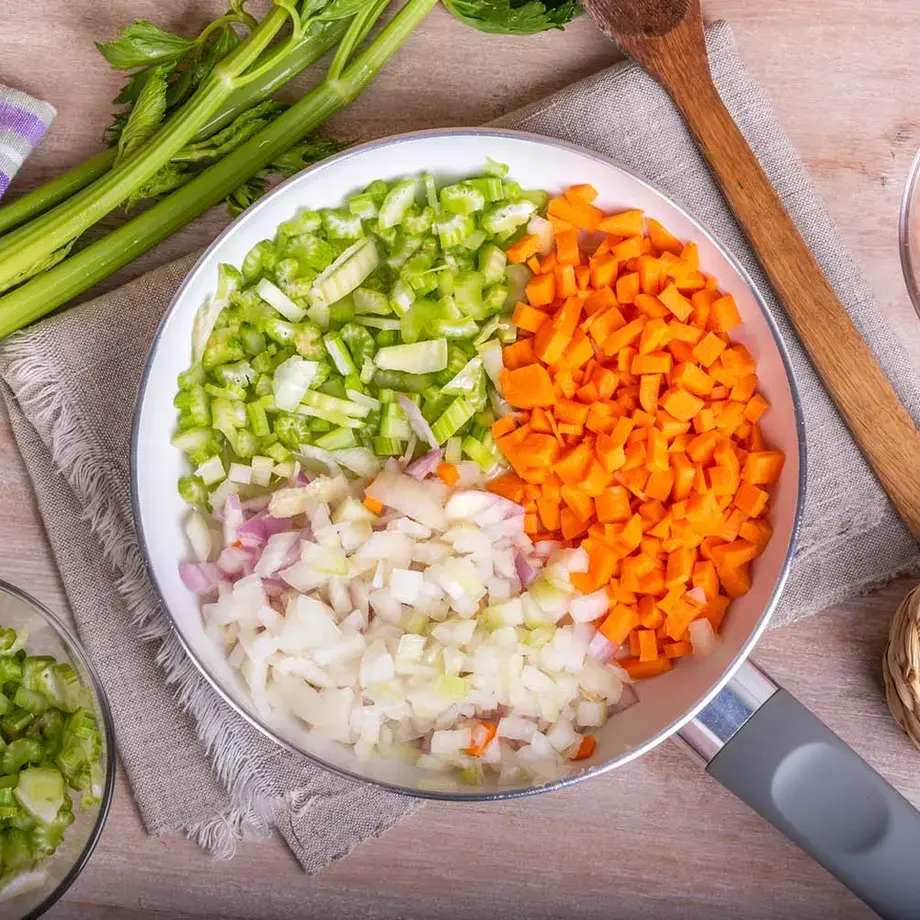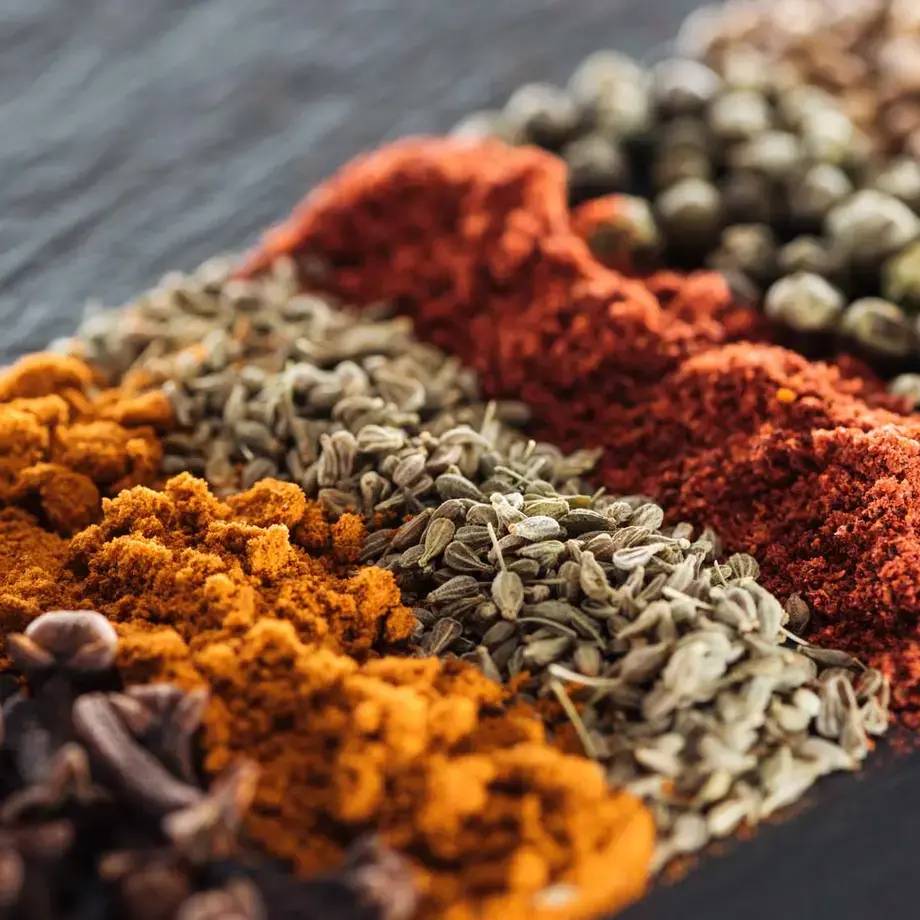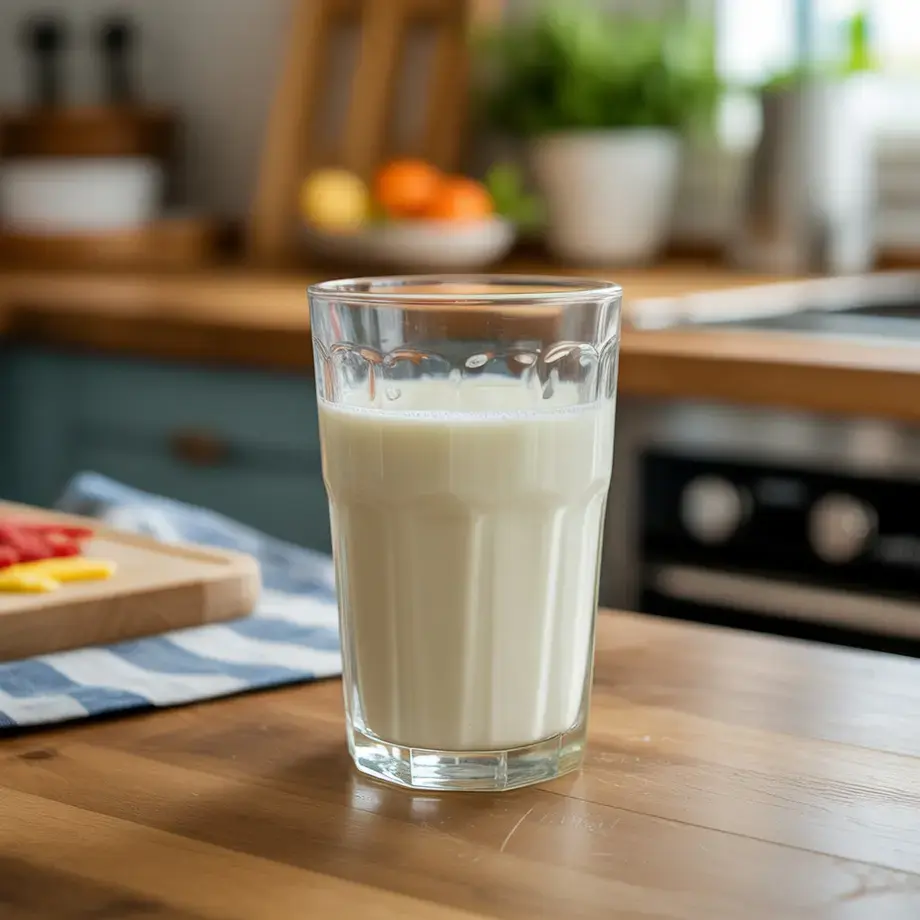Purslane’s leaves are juicy—like miniature nopales without the prickles, or pea shoots that procreated with aloe. Its flavor is mild and elusive: close your eyes, take a bite, and you’re more likely to identify romaine than purslane. It’ll never be mistaken for an herb or a spice. Sometimes it evokes the sea, but without the salt. If you like seaweed, you’ll probably like purslane.
I fell in love with purslane because my husband loves it. The two are inextricably linked for me. Ari’s former restaurant Musi evolved so fully around purslane that its leaves—stylized in a graceful shrug, adorned with a single yellow flower, and gilded with gold leaf—became the restaurant’s logo.
From Garden Nuisance to Gourmet Ingredient
Purslane used to piss me off (I guess you could say that about the husband, too). A decade ago, I didn’t know what it was—just a weed with fat purple stems that grew relentlessly in my planters and between the rocks in my garden. Pulling it out was a summer chore. I definitely didn’t eat it before Ari.
Around the world, purslane goes by many names and grows both along the sea and in sidewalk cracks. In Hawai‘i, it blankets sandy shores, where we call it 'akulikuli kula. It’s at once Lebanese, Palestinian, Mexican, and Indian—indigenous to, and claimed by, many disparate cuisines.
Google searches for purslane still mostly lead to foragers’ blogs and wild food sites urging readers to make purslane salads and stews—not fine dining menus. And yet, over the years, I’ve watched purslane show up on increasingly fancy menus—sometimes listed, sometimes not. It’s become an “if you know, you know” kind of leaf, tweezered onto plates alongside sorrel and nasturtium—both of which have already achieved Fancy Gourmet Leaf status. Trust me: purslane is the Next Big Leaf.
Purslane on the Plate: Where Chefs Are Using It Now
For the last five years, I’ve kept a running list of every time I’ve spotted purslane on a menu (other than at Musi) or seen it wielded by a chef. With heirloom tomatoes at Elwood. Dashi-glazed scallops at ITV (now Laurel) in Philadelphia. In the kitchen at Francie in Brooklyn. With lobster mushroom confit at Elske in Chicago. Tucked between morels at Oyster Oyster in Washington, D.C.
Johnny Spero of Reverie in D.C. says, “I love the texture more than anything. It also has this really great balance of acidity and salinity that makes it a really great garnish. It does more than just look pretty.” As he shifts to a summer menu that will be entirely vegetarian in July and August, purslane will star.
Purslane isn’t for everyone. “I do like the flavor; however, I find the texture challenging, as I do with all succulents,” said Nich Bazik, chef and owner of Provenance in Philadelphia.
At Ember and Ash in Philadelphia, Scott Calhoun is eagerly awaiting this year’s arrival from Green Meadow Farms to use in his beef set. “I love purslane not only for its flavor—a bright, crunchy sort of citrus and sorrel finish to the herb—but also for its health benefits. It’s super high in Omega-3, and vitamins A, C, and E. Farmer Ian Brendle picks it between rows of crops, where it grows as a weed,” said Calhoun. “In our new beef shin set, it complements the acid in the poblano salad and salsa verde. For the salsa verde, we use the larger stem ends of the purslane, blending them into a tomatillo-based salsa.”
